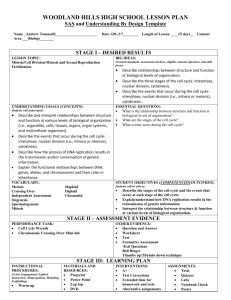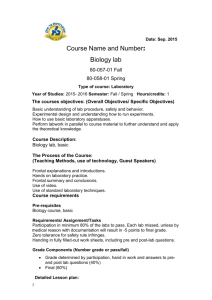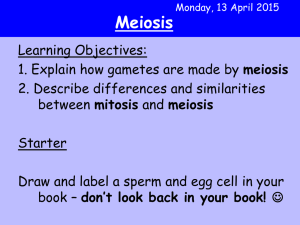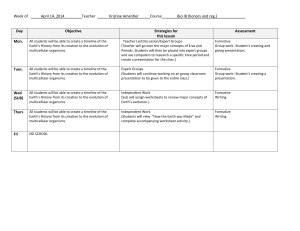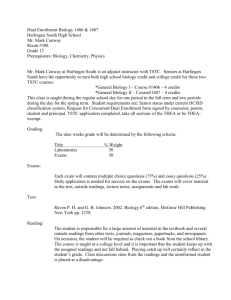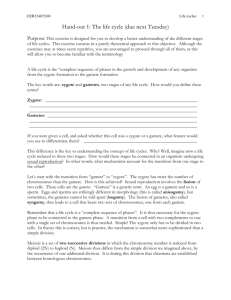Unit Concept Map
advertisement
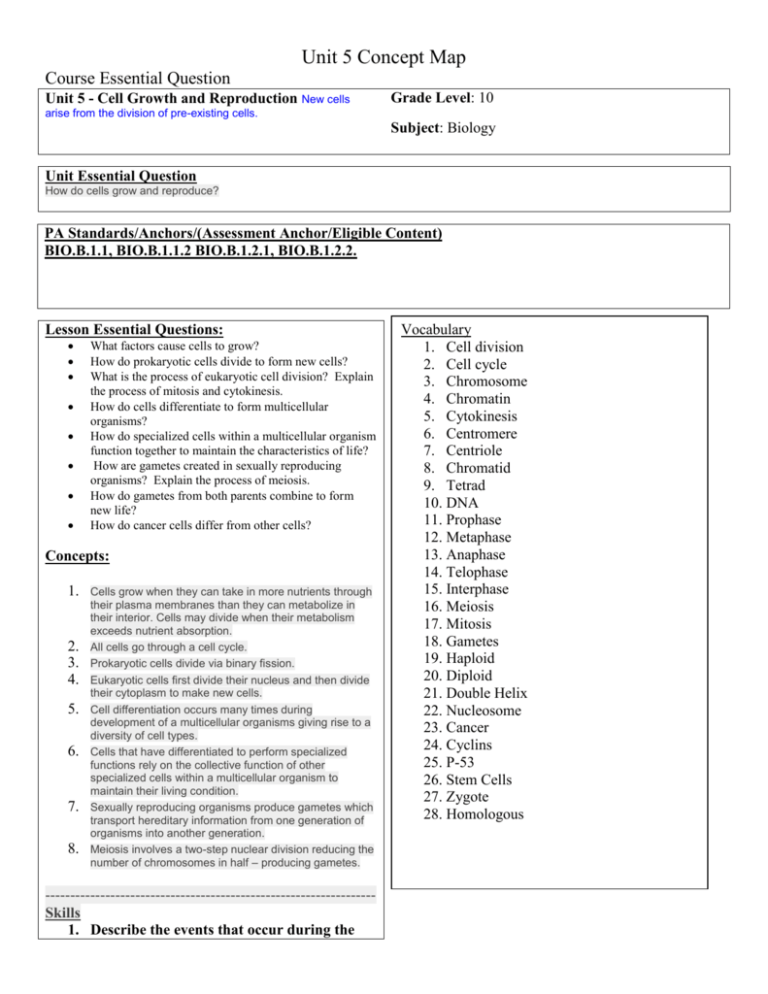
Unit 5 Concept Map Course Essential Question Unit 5 - Cell Growth and Reproduction New cells Grade Level: 10 arise from the division of pre-existing cells. Subject: Biology Unit Essential Question How do cells grow and reproduce? PA Standards/Anchors/(Assessment Anchor/Eligible Content) BIO.B.1.1, BIO.B.1.1.2 BIO.B.1.2.1, BIO.B.1.2.2. Lesson Essential Questions: What factors cause cells to grow? How do prokaryotic cells divide to form new cells? What is the process of eukaryotic cell division? Explain the process of mitosis and cytokinesis. How do cells differentiate to form multicellular organisms? How do specialized cells within a multicellular organism function together to maintain the characteristics of life? How are gametes created in sexually reproducing organisms? Explain the process of meiosis. How do gametes from both parents combine to form new life? How do cancer cells differ from other cells? Concepts: 1. 2. 3. 4. 5. 6. 7. 8. Cells grow when they can take in more nutrients through their plasma membranes than they can metabolize in their interior. Cells may divide when their metabolism exceeds nutrient absorption. All cells go through a cell cycle. Prokaryotic cells divide via binary fission. Eukaryotic cells first divide their nucleus and then divide their cytoplasm to make new cells. Cell differentiation occurs many times during development of a multicellular organisms giving rise to a diversity of cell types. Cells that have differentiated to perform specialized functions rely on the collective function of other specialized cells within a multicellular organism to maintain their living condition. Sexually reproducing organisms produce gametes which transport hereditary information from one generation of organisms into another generation. Meiosis involves a two-step nuclear division reducing the number of chromosomes in half – producing gametes. -----------------------------------------------------------------Skills 1. Describe the events that occur during the Vocabulary 1. Cell division 2. Cell cycle 3. Chromosome 4. Chromatin 5. Cytokinesis 6. Centromere 7. Centriole 8. Chromatid 9. Tetrad 10. DNA 11. Prophase 12. Metaphase 13. Anaphase 14. Telophase 15. Interphase 16. Meiosis 17. Mitosis 18. Gametes 19. Haploid 20. Diploid 21. Double Helix 22. Nucleosome 23. Cancer 24. Cyclins 25. P-53 26. Stem Cells 27. Zygote 28. Homologous cell cycle; interphase, nuclear division (mitosis or meiosis) and cytokinesis 2. Compare and contrast the processes and outcomes of mitotic and meiotic nuclear division Formative Assessments Summative Assessments 1. Ticket out the 1. Quizzes door 2. Unit Tests: 2. Think-pair-share Test 1 – Cell 3. Thumbs up – Division Thumbs down Test 2 – Meiosis 4. Concept Map 3. Cell model 5. Sentence starter 4. Labs: prompts Regeneration in 6. Collins writing Planaria – PH Lab 7. Venn diagram Manual #10 8. Compare Modeling Meiosis – contrast PH Lab Manual 9. 3-2-1 #11 10. Frayer diagrams Additional Meiosis 11. KWL Labs 12. Whiteboard Comparing Surface responses Area and Volume – PH Lab manual Quick Lab 5. Activity: Calculating Haploid and Diploid Numbers – PH Lab Manual (Data Analysis #16) 6. Projects 7. CDT biology 8. Coloring pages – Biology Coloring Book 9. Steps of mitosis model Resources Biology textbook Powerpoints (from textbook resources) Biology websites: -biologyjunction.com -biologycorner.com -biology.com

